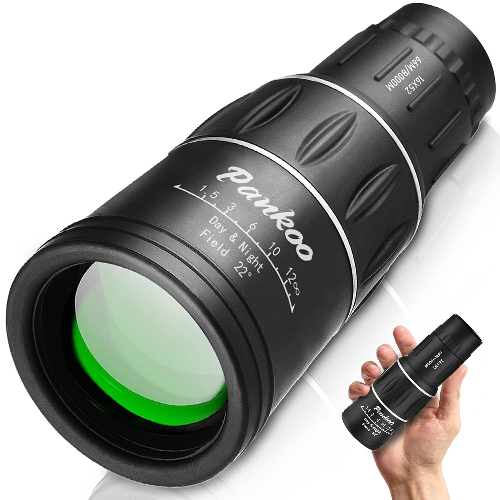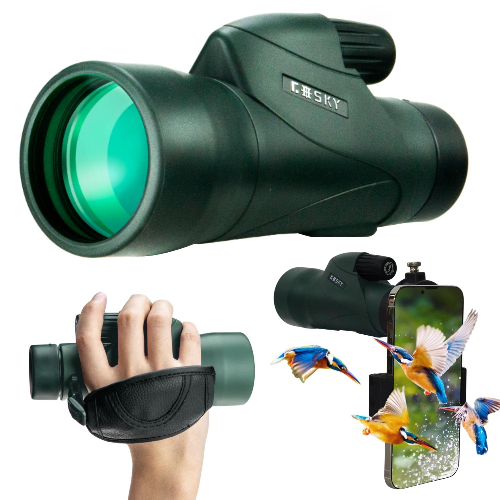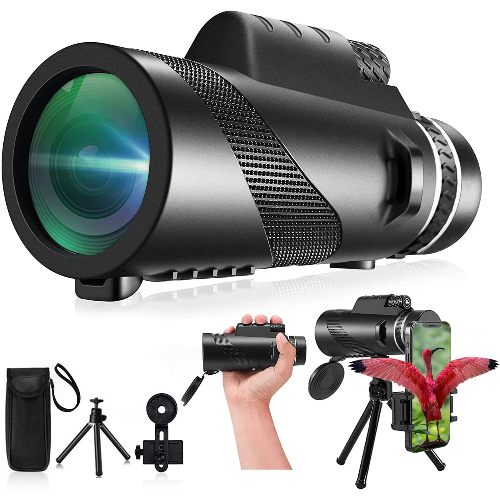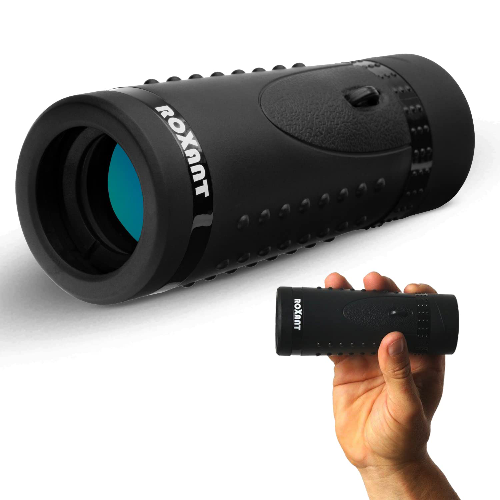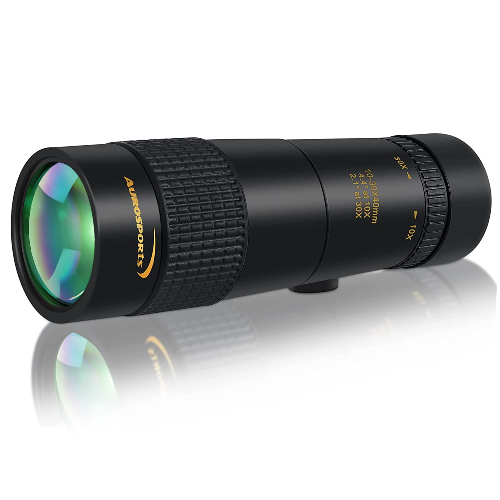The best monoculars for bird watching are a great way to get closer up to your subjects without breaking the bank.
By using a single lens, you can cut down on any magnification issues that may arise if you were using binoculars. This wide-angle lens means they're more lightweight and compact, making them easier to carry with you as you walk through the park or woodland in search of your next target.
You'll still be able to identify different species, however, thanks to their wide field of view – this is dependent on the magnification power of each monocular optics model though. The most powerful monoculars have between 7x and 8x magnification while budget options tend to come in around 5x or 6x.
If you do decide that binoculars are more up your street when it comes to bird watching, check out our guide to the best binoculars available now.
We hope you find your next favorite thing from the list below! Each product was independently selected by our editors. ConsistentReviews may collect a share of sales or other compensation from the links on this page if you decide to buy something (that's how we stay in business). We hope you find your next favorite thing!
How We Choose
We started by narrowing down our list of potential products to those that were advertised as being good. From there, we read through a variety of customer reviews to get an idea of what people were saying about the various options. Finally, we talked with experts in the field to get their opinion on which monoculars would be best for this purpose.
After all that research, we found that there are a few key features you should look for in a bird-watching monocular if you want to be able to see birds clearly while also not disturbing them too much. These include things like having high-quality optics, being compact so they're easy to carry around without getting in your way, and offering magnification levels that will make bright images and show you details without making it hard to see what's going on around you.
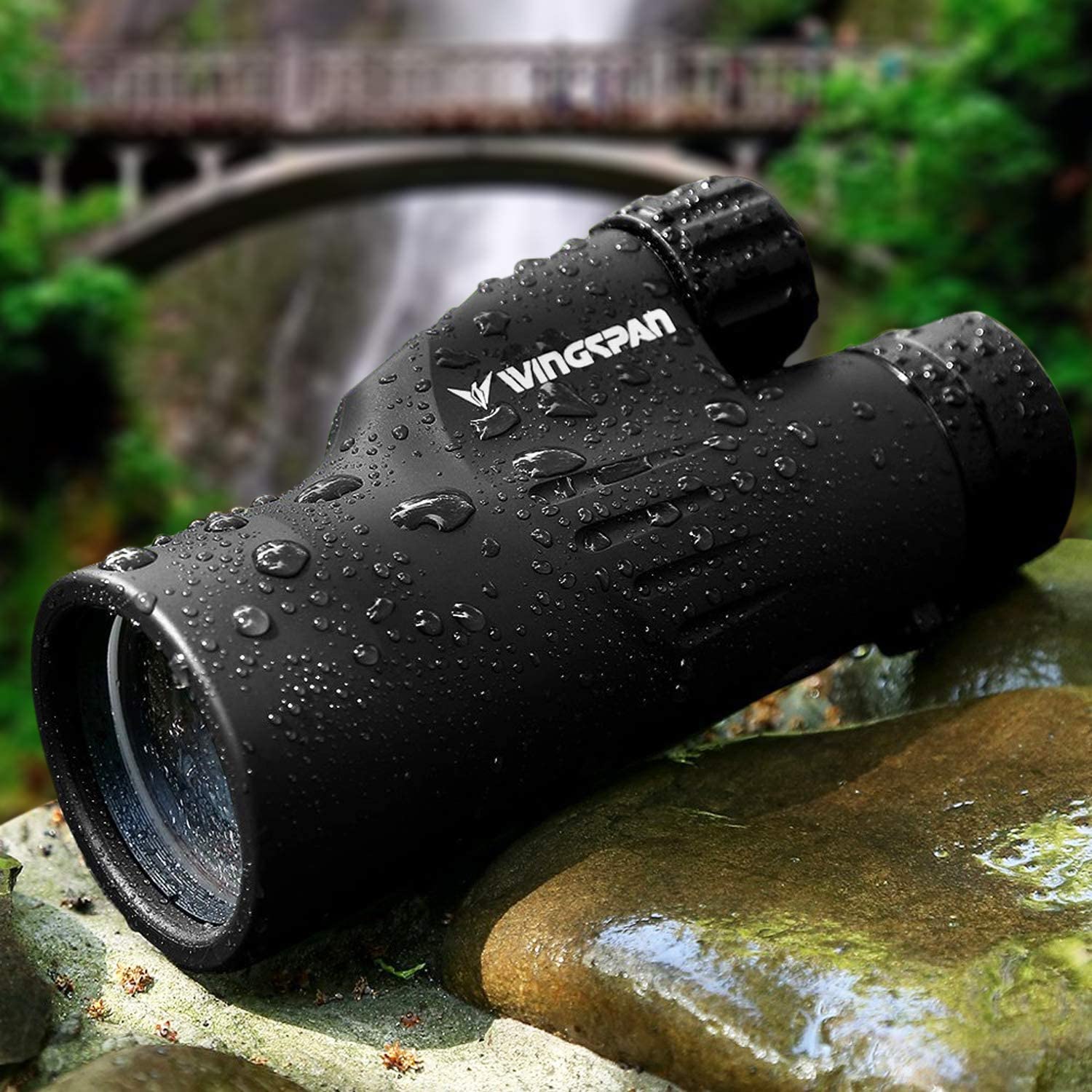
Wingspan Optics Explorer High Powered 12X50 Monocular.
Specially Designed for Power, Distance, and Clarity
Why We Love It
The Wingspan Optics Explorer 12X50 is a great choice for those looking to get the best possible views while still being able to see clearly in low light. This model has impressive magnification power and offers a wide field of view, making it ideal for bird watching, wildlife observation, or landscape viewing.
What You Should Know
The monocular features a single-handed focus system which makes it easy to use without needing to take your eyes off your target. The waterproof construction prevents dust and debris from getting inside the device, making it suitable for use in any weather condition. The external armor on the objective lens size to cover this model provides a secure non-slip grip and durable protection, so you can feel confident using the objective lens with this at night when visibility is limited.
While this isn't the most compact option out there, it does offer some great benefits such as clarity and distance vision that make up for any extra bulkiness. Overall, if you're looking for a powerful handheld monocular that will help you see things clearly then look no further than the Wingspan Optics Explorer High Powered 12X50 - we think this one's worth checking out!
Why We Love It
The Pankoo PA16X52 HD Monocular Telescope is one of the best monoculars you can buy. It's not a cheap monocular either, but it delivers excellent performance.
What You Should Know
The main selling point is its magnification power, which goes up to 16x. That means that you'll be able to see far more in detail than most other monoculars on the market today. You'll be able to see things like insects at night or distant scenery with ease, making it perfect for those who want a high-power telescope without having to carry around a separate device.
It also has an antifog coating and water resistance so you don't have to worry about rain or condensation ruining your view. The only downside we found was that the image quality isn't as crisp and clear image as some other models out there but this is still one of the best monoculars available right now.
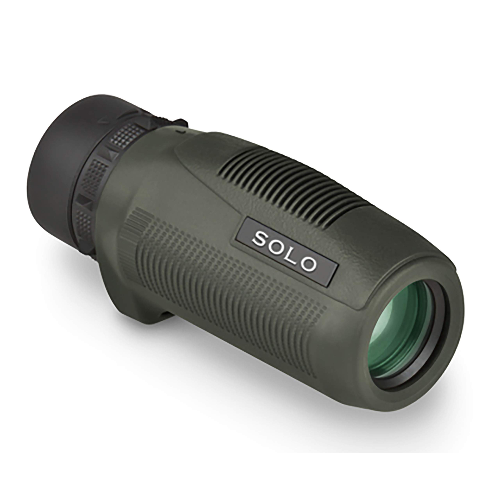
Vortex Optics Solo Monocular 8x25
Adjustable Eyecup Allows for Comfortable Viewing
Why We Love It
The Vortex Optics Solo monocular is a great choice for avid outdoorsmen and women who want to see the world from a new perspective. This compact, lightweight binocular features 8x magnification and 25mm objective lenses for crisp, clear image quality.
What You Should Know
The eyecups are adjustable, allowing you to position them comfortably regardless of your eye shape or size. The rubber armor on the body provides a non-slip grip so you can confidently hold onto it in any weather condition. And with its integrated utility clip, this binocular is easy to take along on any outdoor adventure.
Whether you're hunting or hiking, boating, or birding - the Solo will help bring nature closer so you can enjoy it more fully!
Why We Love It
The Gosky 12x55 HD Monocular is a great choice for anyone looking to take their first steps into the world of telescope viewing. This model comes with a 20mm BAK4 lens and uses an FMC lens, so you're getting quality optics at an affordable price point.
What You Should Know
The eye relief on this monocular is impressive, which means that you can comfortably view objects up close without any distortion or blurriness. The comfortable rubber grip handle makes it easy to hold and control while out in the wild, making it perfect for birdwatching and other activities where you need to keep your hands free.
It's also waterproof and fog proof, making it suitable for use in all types of weather conditions – whether you're hiking or camping or just taking a walk through the park. With its lightweight design and compact size, this monocular is ideal for traveling too - whether you're going on vacation or just taking a trip across town.
Why We Love It
The PhysioPhyx 80x100 Monocular Telescope is a great choice for anyone looking to experience close-up views of the world. This compact monocular features a high-quality BAK4 lens, which provides excellent image quality and brightness.
What You Should Know
The FMC Superior BAK4 green film prism ensures that you get clear, sharp images without any distortion or blurriness. The included handheld adapter allows you to use it with your smartphone, making it convenient to take on the go. It's also ideal for outdoor activities such as hunting, bird watching, and more.
With its 80x magnification power and durable construction, this telescope offers superior optical quality, clarity, and visibility in low-light conditions. You'll be able to see things clearly at night with this powerful monocular!
Why We Love It
The Roxant Wide View Monocular is a great choice for those who want to see more with their vision. This binocular has a wide field of view and high magnification, making it ideal for viewing distant objects. The BAK-4 optical glass ensures superior light transmission and brightness for an optimal viewing experience.
What You Should Know
The compact design makes this monocular easy to carry around, whether you're out hunting or sightseeing on an adventure. The durable construction ensures that this binocular will last through tough situations without breaking down or losing the optical quality or clarity. Additionally, the rubberized grip provides less shake when holding the device securely so you can get a better view without any distortion.
This inexpensive monocular also comes with a tripod mount so you can use it as an actual telescope if you prefer to look at things from afar rather than close up. If you're looking for something versatile that can do it all then the Roxant Wide View Monocular is definitely worth considering!
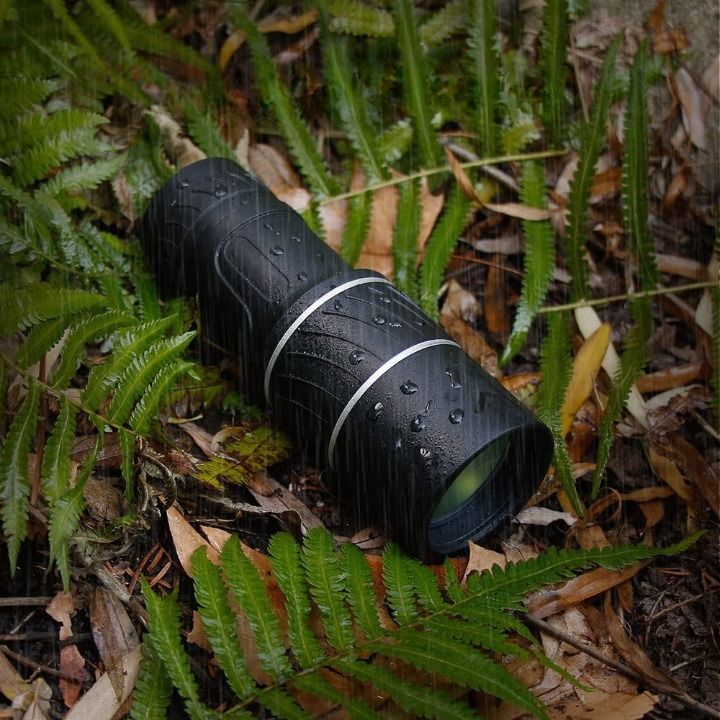
16x52 Monocular Dual Focus Optics Zoom Telescope for Birds Watching
Waterproof & Fog Proof Design
Why We Love It
The Archaer Archeer313 is a great choice for those looking for a compact and lightweight monocular. This model features a high-quality, 52mm large objective lens that provides excellent image quality. The binocular also has an 18.5mm eye relief, making it suitable for use by adults and older users alike.
What You Should Know
The ergonomic design of the Archaer Archeer313 makes it comfortable to use for extended periods of time. The rubberized exterior ensures that the binoculars are both waterproof and fog-resistant coating, making them ideal for use in inclement weather conditions. Additionally, the battery life on this model is impressive at up to 50 hours per charge, which allows you to enjoy your favorite activity without having to worry about running out of power mid-way through.
Overall, the Archaer Archeer313 offers great value for money with its impressive specs and durable construction all wrapped up in a sleek package at an affordable price point.
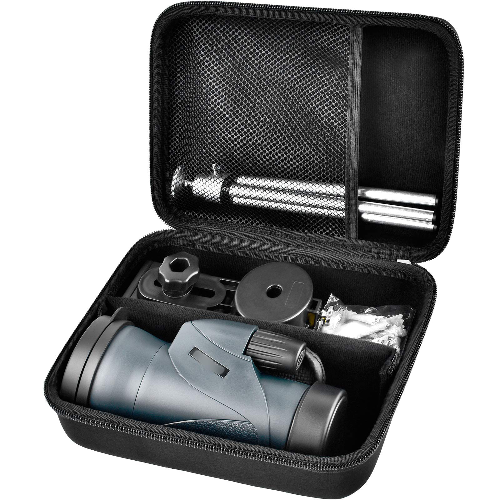
Monocular Telescope Case Compatible with Gosky 12x55
Travel carrying case perfect fit
Why We Love It
The Gosky 12x50 binoculars are a great choice for those looking to get into the hobby without breaking the bank. The quality is outstanding, and they're easy to use thanks to their compact size.
What You Should Know
These binoculars have an adjustable strap that makes them comfortable to wear for hours at a time, and they come with a tripod adapter so you can use them as a telescope if you wish. They also come with a built-in phone holder which is useful if you want to take your phone along on your next adventure.
The only downside we found was that these binoculars aren't waterproof, but considering the price point it's not too much of an issue. Overall, these are some of the best monoculars out there right now and will suit anyone who wants high-quality optics in a compact package.
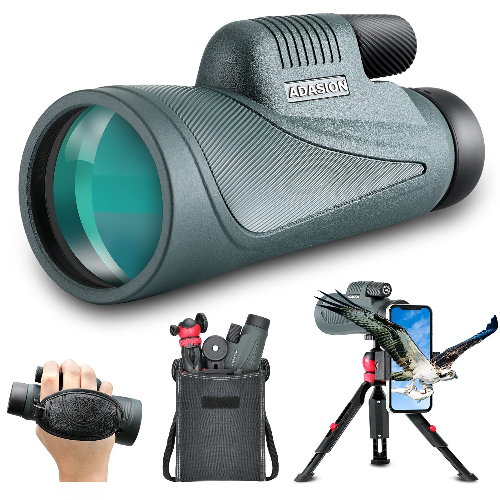
12x56 HD Monocular Telescope with Smartphone Adapter
Lightweight Monocular for Bird Watching
Why We Love It
The Adasion Monocular is a great choice for anyone looking to get into birdwatching or star gazing. It's lightweight and easy to use, with a comfortable hand strap and an IPX7 waterproof casing.
What You Should Know
The large 21mm eyepiece offers comfortable viewing and plenty of magnification without making your eyes strain, while the 12x power makes it a bright image perfect for viewing faraway objects such as birds in flight or constellations at night. The image isn't as crisp as we'd like, but it's still perfectly usable and more than adequate for most purposes.
It also comes with a tripod adapter so you can easily attach your smartphone to take pictures or videos, and the one-click photography monocular is designed to make taking photos simple and straightforward.
Why We Love It
The Aurosports Zoomable Monocular is a great choice for anyone looking for a high-quality, versatile monocular. It has an impressive 40mm lens diameter and 10x magnification, making it suitable for both close-up and distant viewing. The BAK4 prisms provide bright and clear images with minimal distortion even in poor lighting conditions.
What You Should Know
The eye cup has a generous field of view and can be easily adjusted to suit different users. The rubber-armored body ensures that the device is durable and shockproof, making it perfect for camping or other outdoor activities in humid environments. It also features aftermarket 24h customer service if you have any questions about using the product or experiencing any problems with it during your use.
The only downside of this product is its size; at 153mm long it's relatively bulky compared to most other monoculars on the market today. However, this does mean that it's more convenient to store rather than having to keep it close by where you need it - which may be important depending on your usage scenario.
Best Monocular For Bird Watching FAQs
There's a lot of conflicting information out there about monoculars, especially when it comes to birdwatching.
It can be tough to figure out which one is the best for you. There are so many different brands and types of monoculars on the market, how do you know where to start? We've put together some Frequently Asked Questions about Birding Monoculars to help clear up any confusion!
Are Monoculars Any Good For Bird Watching?
While monoculars are best for viewing objects that are closer to you, they can still be used with a binocular vision for bird watching. Monoculars give you the ability to zoom in on a particular area or bird and observe them from afar without scaring them away. While binoculars will allow you to see more of the bird, monoculars let you focus on one detail such as its eyes or talons.
You may want a pair of monoculars with an infrared array if you're especially interested in hunting or trailblazing. These types of monoculars have built-in infrared LED lights which make it easier to spot things against an infrared background like foliage or darkness.
What Is the Best Magnification For Bird Watching?
When you're out in the field bird watching, magnification is important so that you can get a good view of your subject. You also need to consider the conditions – if it's raining or snowing then a waterproof binocular may be more important than high power.
Most people will agree that 12x is about the minimum for regular bird watching, but depending on the species and weather conditions you may want to go to a higher magnification. For example, if it's foggy then you'll want something with more power so that you can see through the haze. At times like this, 20x or even 24x might be useful.
Are Monoculars Better Than Binoculars For Bird Watching?
This is a common question among bird watchers, and it's not an easy one to answer. Monoculars have the advantage of being lighter and less expensive than binoculars, but they also lack the distinct field of view that most experienced birders prefer.
A birding monocular will let you focus on one spot while scanning your surroundings with your peripheral vision, which can be helpful if you're trying to keep track of multiple birds at once. But chances are you'll still need to dedicate specific attention to whichever spot you choose to focus on for any extended period of time. If you want a serious tool for serious bird watchers, then we'd recommend getting yourself a pair of binoculars instead.
How Do I Choose A Monocular Bird Watch?
There are a few features you should keep in mind when purchasing a monocular, especially if you have never owned one before and are not familiar with their workings:
Size and weight – A bird watcher will often be on their feet for long periods of time, following birds as they fly from tree to tree. Choose a lightweight model of lightweight that won't wear you down.
Quality lens – This is the most important feature by far. A sharp image is only possible if the lens is of high quality. A multi-coated lens can improve image quality by reducing glare and reflections, resulting in a sharper and more detailed image. If the optics are poor, it doesn't matter how powerful your monocular is otherwise; all of your observations will be ruined. Therefore, when choosing a monocular, invest in one with high-quality multi-coated optics to ensure that you get the best possible viewing experience.
Waterproofing – Even though these devices don't usually come into contact with water directly (unless it's really bad weather), it's good to have some protection against splashes or rainstorms.
Can Monoculars See Stars?
You may have wondered whether monoculars are any good for astronomy. As they only have one lens, you might wonder if they are powerful enough to spot the stars in the sky. The answer is yes and no. You'll be able to see a wide range of objects in the sky, from planets and star clusters to individual shooting stars (meteors).
However, it's important to note that most monoculars are not suitable for stargazing unless you invest in a lens that covers some additional optics. If your monocular only has one lens then it will magnify the image without bringing it into focus - just like looking through a toy telescope when you were younger.
What Are The Cons Of Monoculars?
Monoculars are not as versatile as binoculars, so they aren't the best choice for bird watching if you're after a general overview of an area. You won't be able to scan an entire field with a monocular, unlike with binoculars.
Monoculars can also be difficult for children to use and operate. If you're looking for a gift for your young nature enthusiast, consider buying them a pair of binoculars first and let them get used to using them before handing over the single lens option.
What Is 8x42 Monocular?
8x42 is one of the most common magnifications you'll see on a monocular, with a larger objective lens diameter of 42mm. It means that if you look through the eyepiece from the objective lens about 16 inches away, an object will appear to have a lens diameter to be about 42 feet away (assuming no obstructions). That's a good middle-of-the-road magnification for general viewing in nature, at events like fairs or festivals, and even some birdwatching.
Other common magnifications include 10x42 (about 55 feet), 12x50 (about 66 feet), and 20x60 (about 88 feet). These slightly higher powers are more suited to observing star clusters or other objects that are farther away. Be sure to check your product's specifications before purchasing.
Are Phone Monoculars Good?
While monoculars are generally portable, one of the main advantages of a phone monocular is that they can be carried around anywhere you go.
They're also handy if you want to use your phone as a camera but don't want to carry something like a tripod or selfie stick with you.
A lot of them come with an infrared night vision mode so you can view things in low light conditions without disturbing your subject. Most are quite small and lightweight too, which means they won't weigh down your pocket or bag when carried around.
Having such a wide range of features in one device does mean that there's often compromised performance though, and it's fair to say that the optics found on most models aren't comparable with high-end binoculars from reputable manufacturers.
Are 12x50 Binoculars Good For Bird Watching?
Bird watchers often need to spot distant birds, and binoculars with a long zoom are ideal for this. 12x50 binoculars have a broad range of vision, making them good wide-angle viewers as well as more powerful models.
Many bird watchers prefer binoculars that can be mounted on a tripod so they don't strain their arms while viewing through the glasses. 12x50 models that can be mounted on a tripod are best suited for watching in poor weather or at night when owls are hunting.
What Lens Do I Need For Bird Watching?
Bird-watching doesn't require a professional lens or an expensive camera. A basic zoom lens or even the camera's built-in zoom will work in a pinch and you'll still be able to get some decent photos.
That said, it won't hurt your birdwatching experience to have a telephoto lens, preferably one with at least 300mm of reach. Longer lenses are also helpful if you want to shoot from afar without disturbing the birds.
Choosing the best monocular for bird watching can be a difficult task, but with the right knowledge, it can be done. To get started, first, determine how close or far away your target will be and how much light is available. Then decide on a budget that fits your needs and look at different magnification levels as well as lens sizes. Next, think about what features you want such as waterproofing or night vision capabilities. Then read reviews from other customers to make sure you're getting value for money. With all this information in mind, anyone can find the perfect monocular for bird watching!



